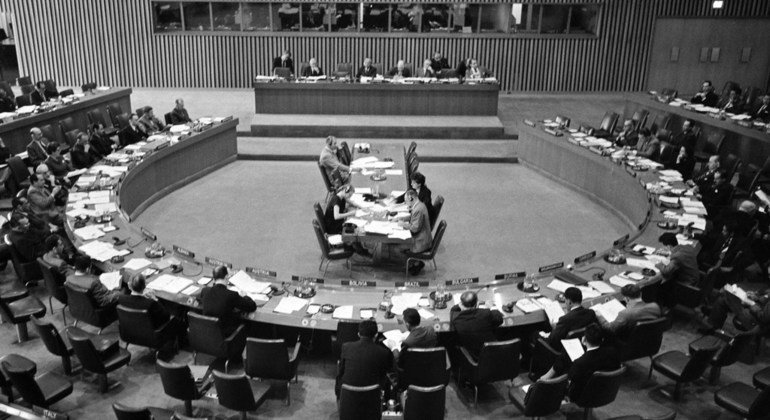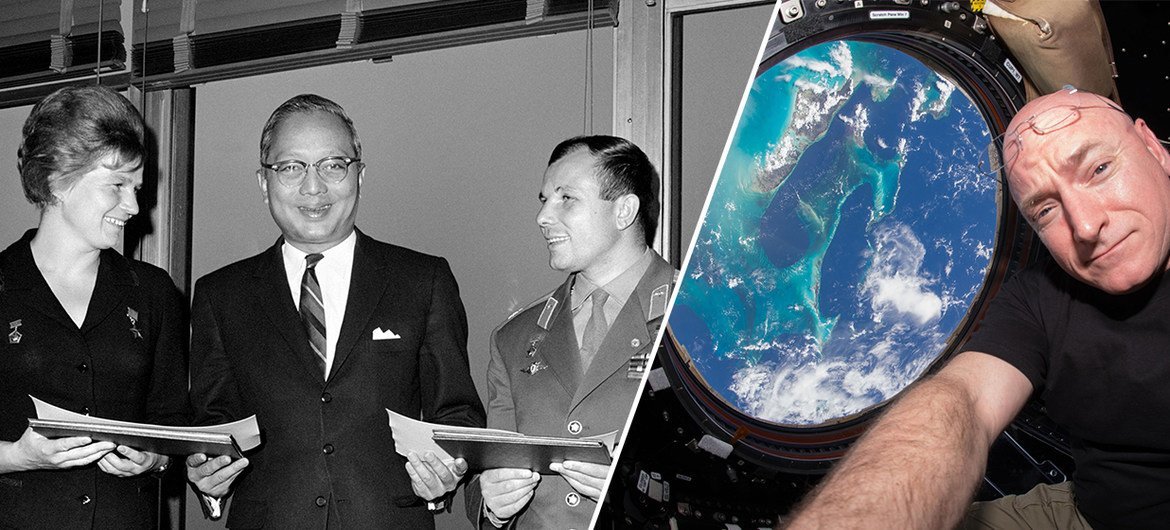
<strong>December 1958:</strong> UN General Assembly adopts resolution on “Question of the peaceful use of outer space”, recognizing humanity’s common interest in outer space and the uses of space to benefit humankind.<br>The following year, the then-ad hoc Committee on the Peaceful Uses of Outer Space convenes its first session (pictured), at the UN Headquarters in New York.

<strong>October 1963:</strong> The first man and woman in space, Soviet cosmonauts Yuri Gagarin (right) and Valentina Tereshkova (2nd left) visit the UN Headquarters. Here, they are seen with Secretary-General U Thant (2nd right) and the President of the General Assembly Carlos Sosa-Rodriguez (left).

<strong>December 1963:</strong> UN General Assembly <a href="http://www.unoosa.org/oosa/en/ourwork/spacelaw/treaties/travaux-prepara…; “Declaration of Legal Principles Governing the Activities of States in the Exploration and Uses of Outer Space”, establishing space law as a new body of law.

<strong>July 1969:</strong> UN flag accompanies US astronauts Neil Armstrong, Edwin Aldrin Jr. and Michael Collins on the journey to the moon on Apollo 11.<br>Here, the three astronauts (Armstrong – 2nd left; Aldrin – 3rd right; and Collins – 2nd right) visit the UN Headquarters, and present Secretary-General U Thant (centre) with a piece of lunar rock and the flag (July 1970).

November 2016: UN appoints former US astronaut Scott Kelly, who spent one year in outer space – aboard the International Space Station – as the Organization’s Champion for Space to raise awareness on the benefits of space for sustainable development.
Pictured here, Mr. Kelly (left) and Simonetta Di Pippo (right), the Director of the UN Office for Outer Space Affairs (UNOOSA).

<strong>June 2018:</strong>UN Postal Administration issues a set of special commemorative stamps, marking UNISPACE+50.<br>The stamps “represent humankind’s achievements in space,” said UN Champion for Space and former NASA astronaut Scott Kelly, noting the benefits that space brings to life below.








